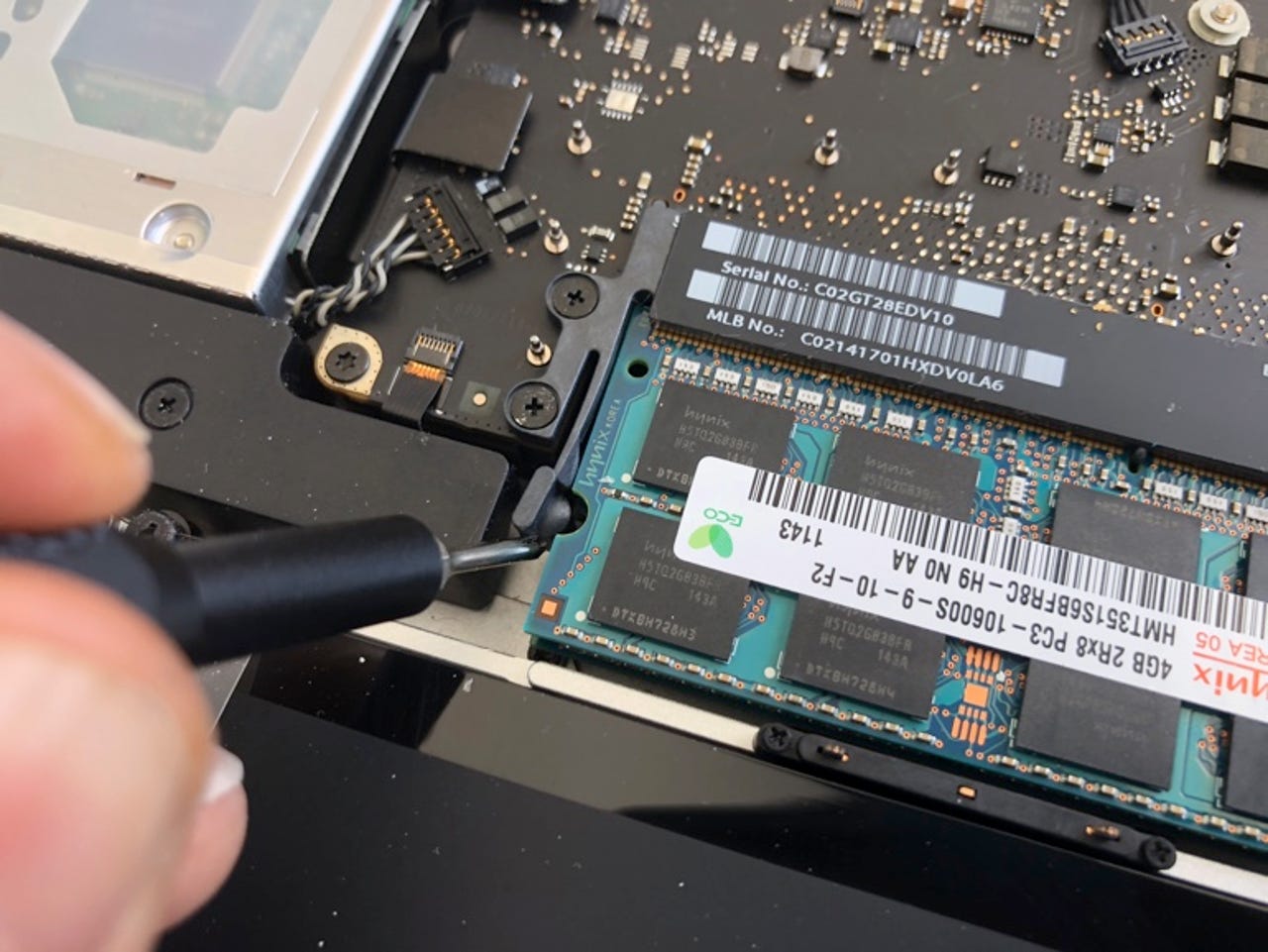Make your old Mac faster

Grab your upgrades
Head over to OWC.com to discover what upgrades are available for your Mac, MacBook, MacBook Pro, iMac, or even Mac Pro.
Getting ready
I have the patient -- in this case an A1297, 17-inch late 2011 MacBook Pro with 8GB of RAM and a 1TB hard drive. Ready to go in I have a 1TB OWC Mercury Electra 6G SSD, and a 16GB RAM kit.
Also on ready to help with the operation is my iFixit Manta driver kit, which is ideal to tackle the tiny screws holding the MacBook Pro together.
NOTE: Before you carry out this upgrade, make sure you have a backup of the data on your Mac. I recommend using Time Machine because this makes for a smoother recovery, but other methods exist. Choose what you are comfortable and familiar with.
Here are the parts
Here are the parts going into the MacBook Pro. These will significantly boost the performance and dramatically reduce applications loading time and boot time (which with the old drive was measured in minutes).
Here are the bits I need to tackle the fasteners
I'll be tackling two fasteners -- Phillips size 00 and Torx T6.
Let's get into the MacBook Pro
Time to tackle the screws holding the MacBook Pro together. There are ten screws in all (you'll find there are two different sizes, so keep a note of where they go -- although you can't really go wrong).
Carefully remove the screws
Using the right tools dramatically reduces the risk of chewing up the fastener, especially these small Phillips 00 fasteners.
What's that blue stuff on the fastener?
You might notice some blue stuff on the fasteners. This is a thread locking compound that prevents the screws working their way loose over time. Don't wipe it off because it will help keep the fasteners in place for you again when you put the laptop back together.
We're in!
Once all the fasteners are out gently pry the back cover off the laptop (it might be a bit stuck in place, so work it slowly and carefully). But once the cover is off, you're in!
First let's tackle the RAM
The RAM is held in place by plastic clips at either end of the modules. Pull the clips apart (away from the RAM modules) and the modules will pop up.

Pull the module out
Once the module has popped up, pull it out towards you to remove the first one.
Pull the second module out
You'll notice that in order to free the second module you need to pull the clips to the side once again for it to pop up completely. Once it has done that, pull it out like you did with the first one.
Replace the RAM modules in reverse order
Start the replacement process by replacing the bottom RAM module (the one you removed last) first.
Slot in and push down
Slot it into the holder at an angle and then push it down to engage against the clips.
And the next one...
Replace the next module in the same way. Slot it in and push it down into place.
And that's the RAM upgrade done!
Now onto the storage
Next we move onto replacing the hard drive with the high performance OWC SSD. The old drive is held in place with four Phillips 00 fasteners... number 1...
Number 2...
Number 3...
Number 4...
Pull the tab
To remove the hard drive, carefully pull the plastic tab.
Remove the power/data connector
Carefully remove the power/data connector. Pull on the plastic connector and not the ribbon cable (the cable is delicate, and you don't want to break it!).
Move over the mounting hardware
Look at the edges of the hard drive and you'll notice four mounting pegs that you need to transfer over to the SSD.
Transfer over the mounting pegs
Unscrew them from the hard drive using the Torx T6 bit...
Fit them on the SSD
... and fit them onto the SSD. No need to screw them too tight. Go easy! Finger tight is more than enough.
All fur mounting pegs fitted
Now that's done. it's time to slid the SSD into place.
Refit the power/data connector
Make sure the pegs go into the approprite slot.
Place the SSD into the mounting cradle
Place the SSD into the mounting cradle and do up the four mounting screws.
Time to refit the back cover
You're almost done! Now it's time to refit the back cover and refit the fasteners. Remember not to go crazy on these tiny fasteners. A gentle finger tight is ample because they are easily damaged.
Check to see if the cover is properly in place
Carry out a final visual check to make sure that the cover is back in place properly and all the fasteners are in place.
You're ready to get your data on the new SSD
Follow Apple's documentation for how to use the macOS recovery tool to get your Mac up and running and recover the data using Time Machine. If you're not using Time Machine, you'll first need to reinstall macOS and recover from within the operating system.